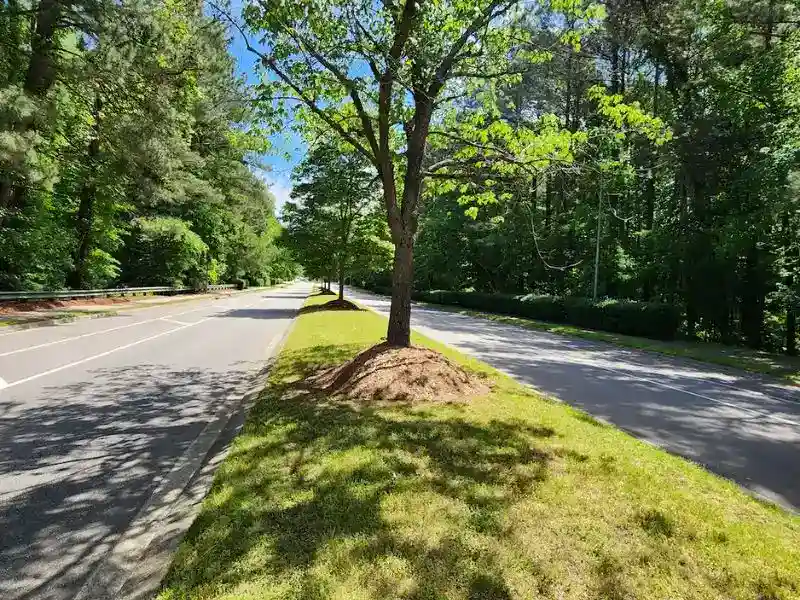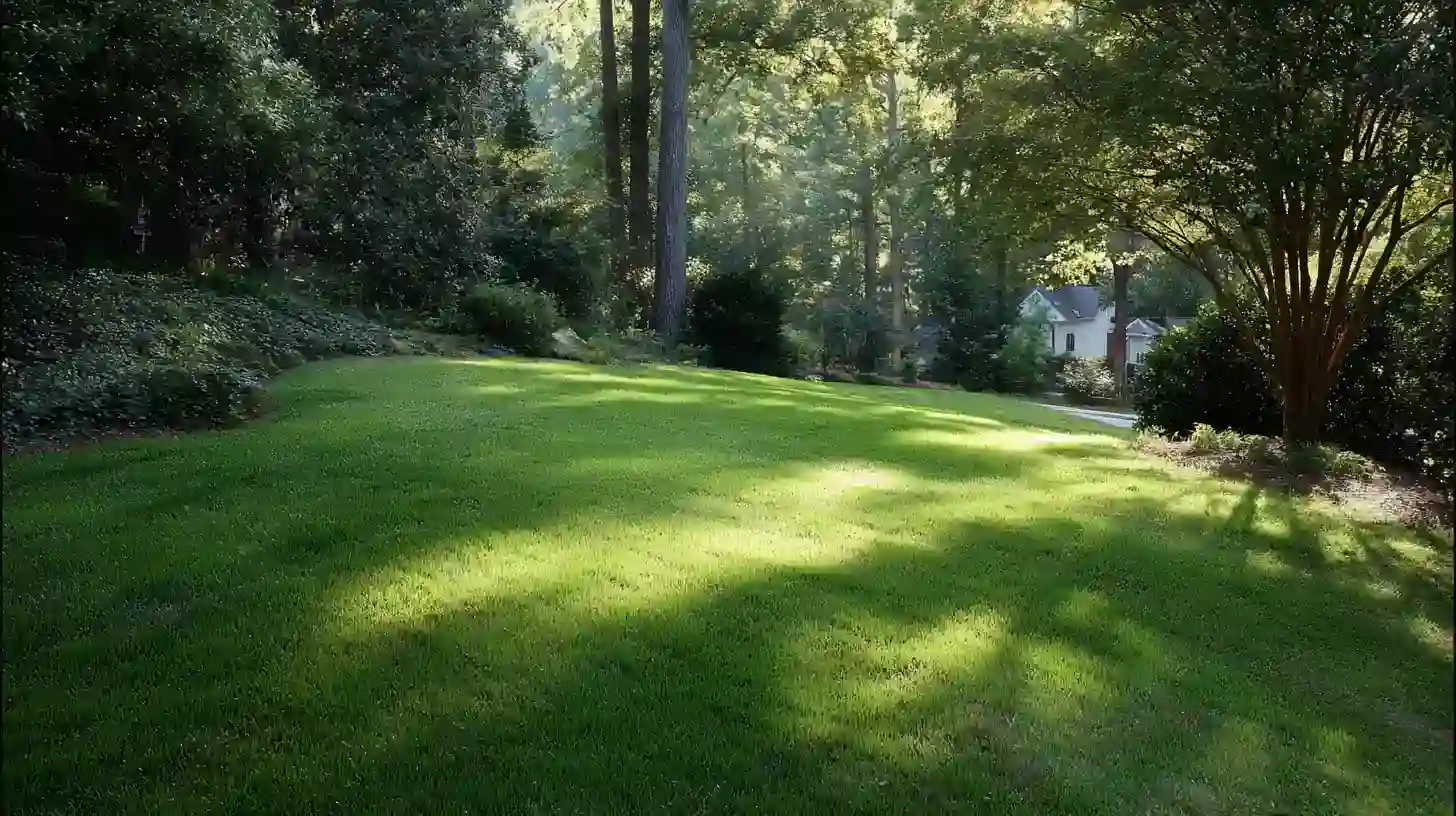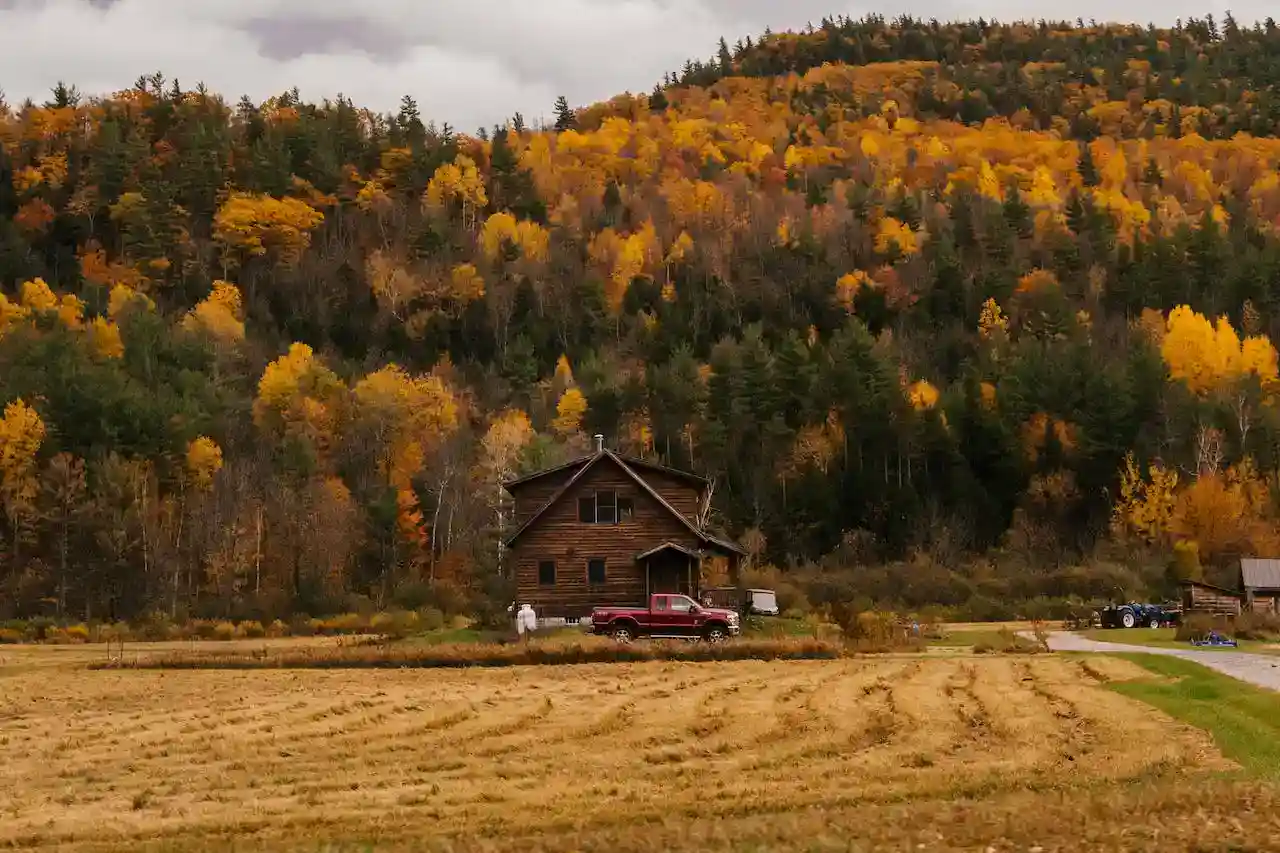Trees enhance landscapes, but improper planting can cause stress and harm to roots. At BroadLeaf Tree & Shrub, based in Durham, NC, root pruning is our solution to restore tree health, supported by expert services across the Triangle area. In this post, our root pruning and root excavation experts are sharing tips on proper planting, pruning, and excavation so you can maintain healthy trees and shrubs year-round.
The Importance of Root Pruning
What Is Root Pruning?
Root pruning is a vital process to correct improper planting, especially for young trees. It involves pruning roots to remove small roots that are circling, allowing the root system to expand and reduce stress on the plant.
Benefits for Your Trees
Root pruning improves nutrient uptake and stability, turning a stressed plant into a healthy tree. For example, an oak tree in Durham with girdling roots regained vigor after our root pruning, showcasing its effectiveness. Our tree and shrub experts provide plant health solutions to help you maintain a healthy landscape and vibrant trees.
How Root Pruning Works
- Conduct a root system inspection to identify problem roots within the root ball.
- Prune small roots with specialized tools during dormancy, such as late fall.
- Offer aftercare, like adding mulch, to support recovery and encourage more roots.
Helpful Guidelines for Root Pruning
- Timing: Prune roots in fall or winter when trees are dormant to minimize stress.
- Tools: Use sharp, clean shears to avoid root damage.
- Depth: Cut no more than one-third of the root ball to maintain stability.
- Learn more pruning tips with our helpful pruning guide.
Understanding Improper Planting
Causes of Improper Planting
Improper planting often occurs when a plant is set too deep or a container plant stays in the same pot too long, becoming root bound. This leads to root damage and stress on trees, as seen with a maple in Apex that struggled due to poor soil prep. Another common issue is a root bound tree due to inadequate root ball preparation.
Signs to Watch For
- Circling roots near the trunk, a clear sign of a pot bound tree that hasn’t been properly loosened during planting.
- A shallow root system causing instability, often noticeable when trees lean excessively after strong winds or heavy rain.
- Stunted growth in your garden, where leaves yellow or drop prematurely despite regular watering, indicating the root system can’t access nutrients.
- Cracked soil or heaving ground near the base, suggesting roots are pushing upward due to being planted too shallow or in compacted soil.
- Visible root flare buried under several inches of soil, a frequent issue with container-grown trees that weren’t adjusted properly.
A root system inspection can confirm these issues, guiding our root pruning efforts.
Example of Saving a Tree Through Root Pruning

A homeowner noticed their mature cherry tree was struggling, with sparse foliage and a slight lean after heavy storms. Upon closer inspection, they found it had a severely pot bound root system from years of improper planting, with circling roots tightly wrapped around the trunk. A professional arborist performed extensive root pruning, carefully cutting away small roots to free the root ball, and adjusted the soil to expose the buried root flare. With added compost and consistent care through the next season, the tree regained its strength, producing a full canopy of leaves and fruit the following year—a clear example of how root pruning can revive a struggling tree.
Root Collar Excavations: Correcting Deep Planting
What Are Root Collar Excavations?
Root collar excavations expose the root flare to fix deep planting, a common cause of stress. This process, often paired with pruning roots, helps trees plant properly and thrive.
When Root Collar Excavations Are Needed
Consider root collar excavations if soil covers the trunk halfway up, decay or fungal growth appears at the base, or roots are pot bound. It’s ideal when trees show poor growth despite proper care, like a leaning pine with buried roots, or if an inspection finds the root flare over two inches below the soil, common with container-grown trees.
Guidelines for Success
- Use air spades to gently remove soil without harming small roots, preserving the root system’s integrity.
- Ensure the root flare is fully visible and at least one inch above the soil line to prevent future stress and decay, adjusting the grade if needed.
- Pair with root pruning to remove circling or damaged roots, and add organic matter to improve soil drainage around the base.
- Monitor the tree for the first growing season, watering consistently to help roots establish, and avoid compacting soil with heavy equipment near the site.
The Role of Root System Inspections
Why Inspections Matter
Root system inspections diagnose issues from improper planting, such as a pot bound condition. This step guides our root pruning and ensures trees receive proper support.
Benefits of Regular Root System Inspections
- Catch root damage early to avoid stress, such as girdling roots that can weaken a tree over time.
- Prevent the need for tree removal by identifying issues like root rot or compaction before they become severe, saving you costly interventions.
- Support long-term plant health by ensuring the root system can access nutrients and water efficiently, especially in drought-prone areas like Raleigh.
- Provide data for future care plans, helping you budget for pruning or soil amendments based on inspection findings.

Practical Example: Reviving Trees with Root Pruning
A homeowner observed their pine tree leaning precariously, with visible circling roots threatening its stability during a routine inspection. Root pruning was applied, carefully cutting away the entangled roots to free the root ball, and a follow-up check six months later revealed robust new root growth. In another instance, a mature oak with compacted soil around its base was identified through a regular inspection; aeration and pruning restored its vigor within a year, demonstrating how these techniques can rejuvenate struggling trees.
Protect Your Trees with Expert Root Pruning Today
Improper planting can harm your trees, but root pruning offers a solution. With 20 pruning sessions monthly, BroadLeaf Tree and Shrub addresses pot bound plants and stressed trees across Durham, Apex, Cary, Holly Springs, and Raleigh. Our root collar excavations and root system inspections ensure every plant thrives, from seedlings to mature trees. Call 919-632-3565 or fill out the form below to schedule a consultation with our root pruning and excavation experts today.


